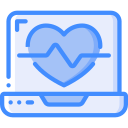Chosen theme: AI-Driven Sleep Tracking Solutions. Discover how machine learning, wearable sensors, and thoughtful design decode your nights and help you wake restored. Share your biggest sleep challenge and subscribe for weekly, science-backed tips.
From Motion to Meaning
Accelerometers and gyroscopes detect subtle movements, while algorithms learn your stillness patterns to estimate when you drift off or toss and turn. Over time, the model adapts to your personal movement baseline and nighttime habits.
Heartbeats and Breathing as Signals
Photoplethysmography captures micro-changes in blood flow to estimate heart rate and variability, while respiration cadence helps flag restlessness. Together, these signals reveal stress, recovery capacity, and potential disturbances that disrupt restorative sleep cycles.
Sleep Stages Without a Lab?
Models trained on polysomnography-labeled datasets estimate light, deep, and REM periods from wearable signals. They are not medical diagnoses, but they provide helpful trends and context, especially when paired with your daily routines and lifestyle notes.
By observing your preferred sleep and wake windows, AI suggests routines aligned with your natural chronotype. It learns how late caffeine, late-night screens, or early runs affect your latency and crafts gentle adjustments over days, not demands overnight.

Smart Alarms and Gentle Wake-Ups
Catching the Right Moment
AI analyzes movement and cardiovascular cues to find a wake window that minimizes grogginess. Instead of a single jolt, it seeks a natural crest in alertness, so you rise clearer-headed and more ready to think, move, and feel present.
Soundscapes and Haptics
Gentle vibrations, softly rising tones, and ambient light cues can lift you out of sleep without spiking stress. Adaptive patterns consider your bedroom environment, making wake-ups consistent even when travel, roommates, or city noise complicate your routine.
Mornings Measured, Not Judged
Morning reports highlight what went well instead of shaming with scores. They suggest one tiny improvement—like shifting bedtime ten minutes—so changes feel achievable. Tell us which nudges feel supportive, and we’ll share community-tested tweaks you can try tonight.



From Jet Lag to Night Shifts: Real-World Wins
Mina flew from Toronto to Tokyo and used AI-scheduled light exposure, meal timing, and naps to shift gradually. Her app adjusted bedtime targets daily, trimming groggy mornings by day three. Comment if you want the exact step-by-step template.
Metrics That Matter, Not Just More Numbers
Efficiency links time in bed to actual sleep, guiding whether you need a tighter window or earlier wind-down. It’s more actionable than a single composite score because it maps directly to choices you can make today.
Heart rate variability reflects nervous system balance. When trends dip, swap intense workouts for mobility or gentle cardio. Pair with mood notes and caffeine timing to learn what restores you fastest, then repeat what reliably lifts your baseline.
Look for fewer awakenings, easier wake-ups, and steadier afternoon energy. If metrics improve but you still feel flat, adjust routines or targets. Your subjective experience matters, and AI becomes smarter when you annotate nights with honest feedback.
Getting Started with AI Sleep Tracking Today
Match comfort and battery life to your habits. Rings offer unobtrusive wear; watches provide richer signals; mats avoid wearables entirely. Prioritize privacy controls, export options, and coaching features you’ll actually use beyond the first curious week.


Getting Started with AI Sleep Tracking Today
Pick one focus—consistent bedtime, reduced latency, or fewer awakenings. Track for two weeks, then iterate. Celebrate tiny wins. If stress spikes while chasing scores, zoom out. Sleep improves when goals feel friendly, flexible, and shaped around your realities.
